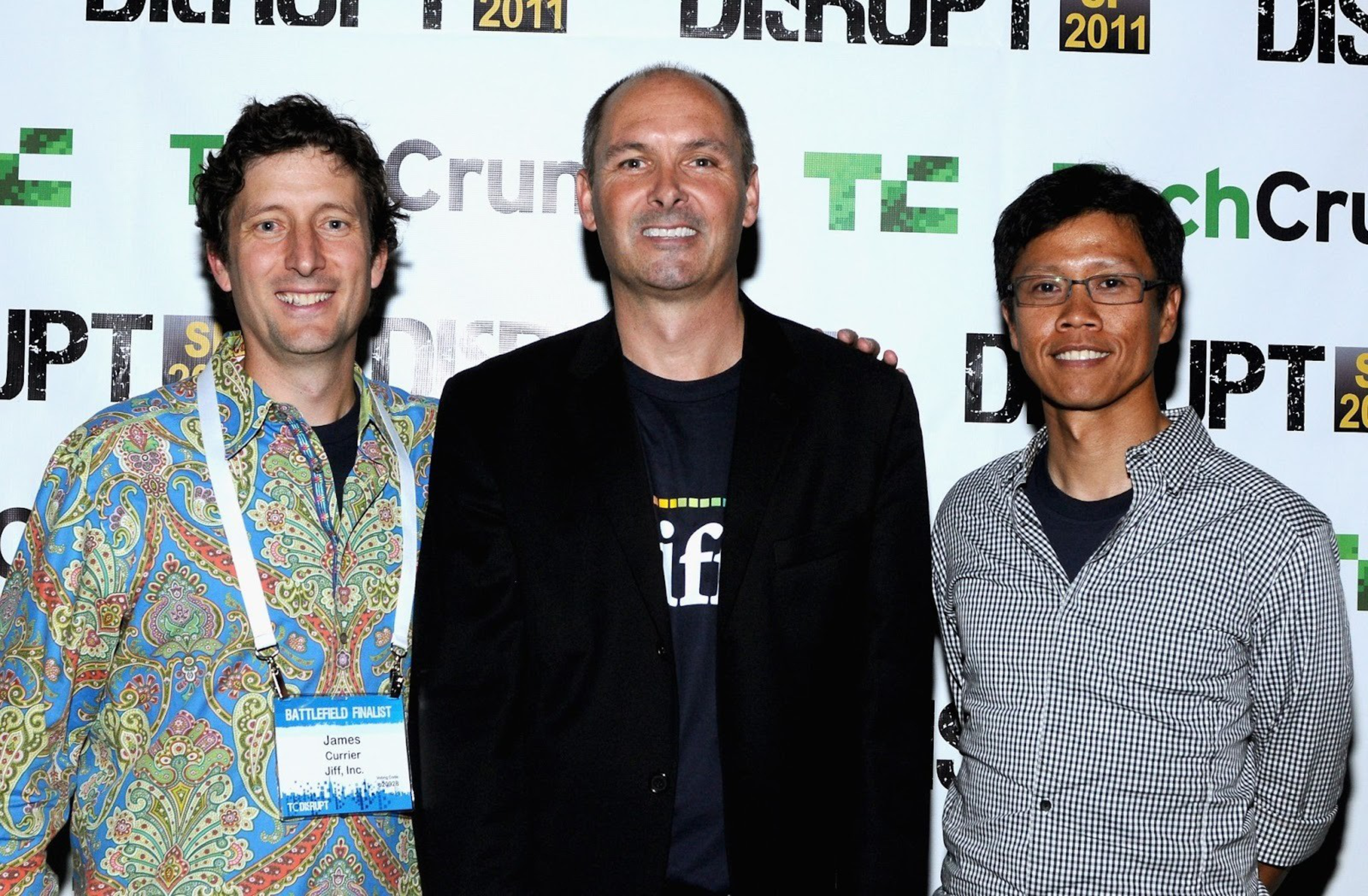The Standard met angel investor and NFX partner James Currier on an overcast Tuesday morning. It was everything you’d expect from a media one-on-one with one of the tech industry’s most veteran VCs: Currier had arrived in his exposed-brick Hayes Valley office in what looked like a Patagonia puffer and rainbow sneaks, having just commuted via Lyft from his Palo Alto home. Coffee arrived via door-step delivery, and wall-to-wall couch-lined creative spaces replaced traditional desk-filled offices.
It was about as stereotypically “tech” as you could imagine—only this time, what Currier had to say about artificial intelligence and generative tech was anything but ordinary.
“In the last year, we’ve been able to use AI to generate photorealistic, meaningful images, and we’ve been able to generate outlines and good essays,” Currier said. “Older AI products did the reading and the teaching, and now AI is starting to get to the point where it can generate. It’s amazing, and everyone’s just staring at it like fireworks.”
Currier is a disciple of the growing church that is artificial intelligence. As a seed-stage investor at NFX, he’s one of the many venture capitalists who are now circling like sharks around scrappy founders and startups that promise to revolutionize and automate everything from video game visuals to college essays.

And in no other place is AI taking off as fast as it is in San Francisco.
Specifically, AI-based generative technologies (opens in new tab) are booming in the Bay Area investing scene, largely driven by the growing popularity of image generators like DALL-E and language models like ChatGPT. New data from NFX (opens in new tab) shows that San Francisco is now the financial powerhouse of the AI startup craze.
Even Bill Gates is buying into the AI hype, calling it “the big one” (opens in new tab) earlier this year. But the rapid pace at which AI technology is advancing means that it has the potential to transform not only the tech industry, but also the fabric of SF life.
Investor Dollars Flowing into the Bay Area
An insane amount of AI wealth is concentrated in the wider Bay Area. AI startups based in the region account for over half of all the funds raised by roughly 500 total generative tech platforms, despite only comprising a fifth of those companies. Over $6.75 billion in funds line the coffers of roughly 111 Bay Area-based AI startups, including the $1 billion dollars raised by leading machine-learning platform OpenAI.
Of the most valuable AI companies, the top four are headquartered in San Francisco—a fact that has investors drooling, as venture capitalists ratchet up efforts to scoop the latest innovations in the generative tech wave (opens in new tab).
At the core of the industry’s success today is OpenAI, effectively the “Big Tech” arm of the machine-learning world. The machine-learning company has, all but single-handedly, changed the game surrounding artificial intelligence, and today retains its position as a core research and deployment company—as well as a growing financial power player (opens in new tab).
The organization behind ChatGPT and DALL-E predicts it will be able to generate over $1 billion in revenue (opens in new tab) by next year, according to Reuters, and much of its money comes from the fact that the company charges developers to license its tech. Investors now say that much of the Bay Area’s growth in artificial intelligence can be attributed to not only OpenAI’s cutting-edge research and products, but also its position as a major backer for startups (opens in new tab) throughout the Bay.
The result? AI has become one of the most lucrative and heavily funded tech sectors, with $116.5 billion invested in AI and machine-learning deals in 2021 globally, according to PitchBook figures.

The Long Road to AI Hype
A brief history lesson: AI is not a new phenomenon—but “generative technology,” such as the chatbot and image-generating tools that have recently gone viral, is the latest development in artificial intelligence-based research for a few years.
Many AI heavyweights have been around for some time now, and artificial intelligence has infused itself into numerous aspects (opens in new tab) of our lives and in our technologies, without us even realizing it: OpenAI was founded in 2015, and users have been able to check their writing skills with Grammarly’s AI-based copy-editing product since 2009. Big Tech corporations have long employed machine-learning experts (opens in new tab) to improve their existing products, and Google famously calls their AI group the “Brain Team” (opens in new tab).
AI skyrocketed in popularity over the last few months, as AI models such as GPT-3 or DALL-E became open source and easy to use. It sounds simple, but these core breakthroughs in AI modeling have pushed the industry into a tipping point—so much so that some industry experts say we should expect to see a Cambrian explosion of new AI companies in the coming months.

“The Bay Area historically had a lot of AI research facilities, such as Google and Facebook,” said Sofiia Shvets, CEO of AI-generated product imaging company Claid AI. “But right now, what we’re seeing is that besides research, there are a lot of ‘Layer 2’ solutions, where [companies] will build on top of fundamental networks.”
Shvets is describing industry-speak for the kinds of applications consumers—like us—can play with: ChatGPT and other AI-based models that turn incomprehensible algorithms into products we can use.
WATCH: What Is ChatGPT? Explaining the Viral AI Chatbot Coming Out of SF
Now that the audience that’s able to play with algorithms has expanded, venture capitalists focused on machine-learning markets are placing their bets on smaller, hyper-specific companies that can use existing algorithms (opens in new tab) to build out products that address a very particular use case.
“AI has been having its moment right now, with OpenAI’s models that are super easy to use,” said Amber Yang, an investor at Bloomberg Beta. “It’s really easy to build companies, and it’s a fundamentally different mindset shift. Now that OpenAI has democratized and made it easier to build these smaller machine-learning companies, people want to move fast, and there’s a lot of competition.”
The race is on, and surveys show that AI used by tech companies rapidly increased throughout 2021 and 2022. Over half of companies surveyed by PwC (opens in new tab) said that they sped up AI adoption plans during the pandemic, and The Standard has already tested out AI applications for online dating, art production and news writing.
How Far Can It Go?
The AI craze is only in early stages, and investors and coders are crowding the scene at a rapid pace. But as the excitement surrounding AI and generative tech’s novelty dissipates, investors like Currier predict the industry will start to refine its products to address different societal needs, eventually resulting in some sort of breakthrough of the magnitude of the iPhone’s 2007 invention.
“We should expect in 18 or 24 months that we’ll start to see the emergence of really visionary stuff,” Currier said. “There’ll be new transactions; there’ll be new needs; there’ll be new products we just couldn’t have imagined before.”
It’s a lofty goal, and the road to get to that point is long. Skeptics in the tech industry (opens in new tab) caution that the hype surrounding generative technologies is simply that—hype. Even if artificial intelligence opens up market opportunities for new startups to form or for investors to clinch big deals, some industry experts are not yet convinced (opens in new tab) that AI and machine-learning research has reached a place where it can be confidently compared to other major tech breakthroughs.
Hype cycles have flung artificial intelligence into the Bay Area technological zeitgeist for years now (opens in new tab), and investors and computer scientists alike have long predicted (opens in new tab) imminent AI-based automation revolutions that would replace humans with computers. Yet, none of those cycles ever fully panned out, and AI’s goals are seemingly as elusive today as they were decades ago.

What’s more, some investors are worried that the industry hullabaloo surrounding AI (opens in new tab) will end up creating another bubble that’s destined to burst, just as the exponential pandemic-era growth saw the tech industry scale and then slump in the span of two short years.
And the unregulated nature of AI/machine-learning technologies today means that it’s a new Wild West in tech—one that’s opened up numerous legal disputes and calls for restrictions as chatbots and image generators grow increasingly capable of producing art, code, written word and more.
But to industry veterans like Currier, skepticism has always been a part of the game, and he views the seemingly endless opportunities of generative tech—and not its potential pitfalls—as the future of the industry.
“We’re not just trying to make money off of AI,” Currier said. “We’re trying to understand how it impacts the world—that’s why we’re doing this. We don’t take salaries; we’re just playing this for sport. We want to be part of how humanity evolves, and humanity is now evolving mostly through tech.”
Bringing Home the Bacon
Where there is money, there is power too. And the influx of investor dollars and AI startups in the Bay might just be the thing to pull San Francisco out of its slump and reposition it as the beating heart of the tech industry.
Already, investors say that many disillusioned or laid-off workers may abandon Big Tech for startups as the demand for (and the wealth surrounding) generative tech increases. And though venture capitalists are watching the looming recession with a good degree of caution, many still view it as a particularly ripe time to invest big in an emerging industry like AI, and in the city surrounding it.
“It’s a great opportunity for us to have great new tech formation, great new startup formation,” Currier said. “We’re going to see, I think, a big exodus from a lot of companies starting in the summer and in the fall, and you’re going to see a lot of great teams formed. It’s a great time to be us as investors because the valuations come down and the quality of the founders goes up.”
AI’s recent hype is luring even the most stubborn SF haters back to the city, as techies and investors scramble to ride the generative tech wave from its unofficial headquarters—and new data may just back this up, as workers relocated to hubs like Austin and San Francisco more than all other metropolitan areas in 2022.

The generative tech movement started less than a year ago, but already the fabric of San Francisco culture has been altered by the industry’s growing excitement. A rash of hacker homes has cropped up in tech-heavy Hayes Valley, newly rebranded by some as “Cerebral Valley” for its position as the community hub for artificial intelligence. Community initiatives like the Neighborhood and its subsidiary communal spaces (opens in new tab) are turning entire regions of the city into quasi-universities and meeting spaces that the AI-minded flock to.
But perhaps it’s not surprising that this city, neighbor to Silicon Valley and longtime stomping grounds for founders and techies, may once again refurbish its image as the heart of the tech world. It was only a matter of time before a major sea change in AI technologies would usher in a new generation of investing, thinking, founding—and generating.
